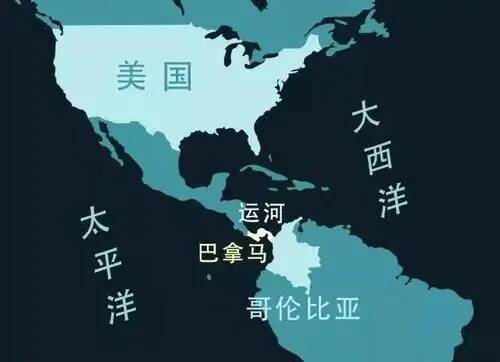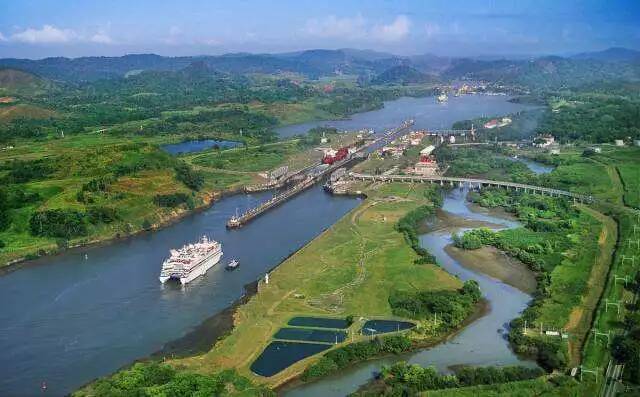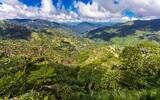Use of coffee cultivation in the Panama Canal area to help cure the effects of deforestation and drought
Recently, in the Kapila district of western Panama, an incentive program for coffee farmers to plant dozens of tree species near the Panama Canal has been launched to benefit key global waterways, Reuters reported. the recent severe drought on the Panama Canal has affected trade flows. And the persistent drought seriously affected agricultural production, agriculture is an important industry of the Panamanian national economy, about 20% of the labor force is engaged in agricultural production, the country has an area of 1.71 million hectares of arable land, a total of 214000 farms. At present, the Panamanian government is taking measures to deal with the drought.

Earlier, according to the website of Fortune magazine, the Panama Canal suffered from a drought crisis, which will continue for several years. Under normal circumstances, the Panama canal handles about 3% of the world's maritime trade and 46% of containers from northeast Asia to the east coast of the United States. It is also Panama's largest source of income, generating $4.3 billion in 2022. At present, the canal can only carry a maximum of 24 ships a day, far lower than the previous capacity of 38 ships a day, and the situation is likely to continue to worsen in the future. At present, other countries are considering other voyages, but this will increase transportation costs and time, which also leads to the current high price of coffee.

So the plan, launched earlier, is a 15-year project aimed at mitigating years of accumulated environmental damage, including soil erosion and local river pollution, which led to a drop in the water level of the Panama Canal. At the same time, the plan allows farmers to expand their planting range and get higher prices for their robusta beans. According to the USDA, more than 80% of Panamanian coffee is Arabica coffee and the remaining 20% is robusta coffee. Robusta mainly grows in low elevations, but Arabica coffee is mainly exported, while Robusta is mostly used for self-sale.
So far, the Panama Canal Authority (ACP) has spent $32 million on the project. The program is also used to train coffee farmers to adopt more environmentally friendly methods and to help them obtain certification to provide a premium for coffee beans. According to a team of local coffee growers, the plan improves the economy of coffee farmers, helps the climate, and helps canals better cope with drought. Reforestation with coffee won't solve all the problems, but it will help.
According to statistics, about 1700 local farmers benefited from the initiative, and during the last coffee harvest, about 10600 bags (60 kg / bag) of robusta beans were harvested in the Kapila area of the western basin of the canal. Experts believe the project will help slow the destruction of surface water sources, which are vital to the operation of the canal.
Important Notice :
前街咖啡 FrontStreet Coffee has moved to new addredd:
FrontStreet Coffee Address: 315,Donghua East Road,GuangZhou
Tel:020 38364473
- Prev

Lucky persimmon Dafu is complained that it doesn't live up to its name!
▲ click to follow | Daily boutique Coffee Culture Magazine Coffee Workshop New year is approaching, various chain coffee brands are busy with online promotional activities to catch up with the holiday traffic on the eve of the Spring Festival to drive the sales of new products. For example, Ruixing recently worked with Maotai for the second time to launch the year of the Dragon Sauce Chocolate, but it is a pity that it is the second time.
- Next

Introduction of Jamaican Coffee Development, Blue Mountain Coffee and Jamaica Blue Mountain No.1 Coffee
Yamai plus an island country in the Caribbean is the third largest island in the Caribbean. The coastal areas of Jamaica are plains, with hills and limestone plateaus in the central and west, mountains in the east, and the Blue Mountains in the east. Jamaica has a tropical rainforest climate, with rainy seasons from May to June and from September to November each year.
Related
- What effect does Italian American coffee with filter paper have? Will coffee taste better if it is put on filter paper at the bottom of the powder bowl?
- What is the color difference in coffee beans? What are the characteristics of honey processed coffee beans? Why are the anaerobically treated coffee beans uneven in color?
- How does novice Xiaobai quickly get started and make coffee? Newbies learn to make coffee by hand and share the specific steps and process process!
- Costa tea has a shelf life of 100 years?! Expert: Unable to verify
- It's a huge uproar! American milk addition was rejected by Manner employees?!
- Mocha pot coffee bean recommendations| How fine and how much powder should be used for grinding? What parameter ratios do I need to use to make milk with Mocha pot coffee?
- What are the characteristics of the world's top ten coffee beans treated with Costa Rica honey? How to make black honey kadura from Tarazhu Pilon Processing Plant taste good?
- How to make deep-roasted coffee? What grinding water temperature does authentic Jamaica Blue Mountain No. 1 coffee use to brew it well?
- Selected high-grade rose summer coffee flavor tasting guide Why Panama rose summer has the aroma of flowers and fruits
- What equipment does a novice Xiaobai need to buy to learn to make coffee? Filter cup electronic scale bean grinder manual flushing pot purchase guide

